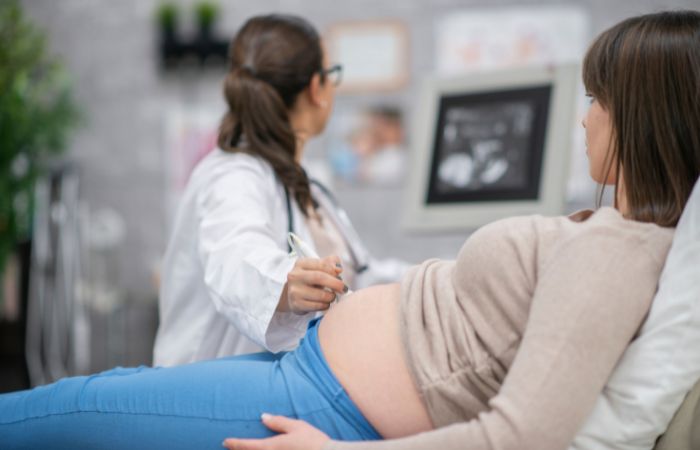Childbirth is a momentous event, filled with anticipation and emotion. While many deliveries proceed smoothly through vaginal birth, certain situations necessitate a cesarean section (C-section) to ensure the safety of both mother and child. This article explores the absolute indications for C-sections, offering a detailed look at when this surgical procedure becomes crucial. By understanding these circumstances, expectant mothers and their families can make informed decisions, guided by their healthcare providers.
What is a Cesarean Section?
A cesarean section, commonly known as a C-section, is a surgical procedure used to deliver a baby through an incision in the mother’s abdomen and uterus. Unlike a vaginal birth, which involves the baby passing through the birth canal, a C-section is performed when it’s deemed necessary to address specific complications or risks associated with vaginal delivery.
Absolute Indications for a C-Section
Absolute indications are situations where a C-section is not just preferred but required to ensure the health and safety of both the mother and the baby. Here are some critical scenarios where a C-section becomes unavoidable:
1. Malpresentation of the Baby
One of the primary absolute indications for a C-section is malpresentation of the baby. In the ninth month of pregnancy, an ultrasound might reveal that the baby is in a breech position (feet or buttocks down) or an abnormal position like transverse (sideways) or oblique (diagonally). In these cases, the baby may not be able to pass through the birth canal effectively, making a C-section necessary.
Interlink: Understanding malpresentation is crucial in planning the safest delivery method.
2. Contracted Pelvis
A contracted pelvis refers to a condition where the pelvic bone structure is unusually small or narrow. This can make it challenging for even a normal-sized baby to pass through. In such instances, a C-section is often the best option to avoid complications during vaginal delivery.
Interlink: A contracted pelvis is a significant factor in determining the need for a C-section.
3. Cephalopelvic Disproportion (CPD)
Cephalopelvic disproportion occurs when the baby’s head or body is too large to fit through the mother’s pelvis, even if the pelvis itself is not contracted. This can make vaginal delivery risky or impossible, thus necessitating a C-section to ensure the baby’s safe delivery.
Interlink: Cephalopelvic disproportion often leads to the decision to perform a C-section.
4. Placenta Previa
Placenta previa is a condition where the placenta is positioned lower in the uterus and covers part or all of the cervix. This can lead to severe bleeding during labor, making a C-section the preferred method to avoid excessive blood loss and ensure a safe delivery for both mother and baby.
Interlink: In cases of placenta previa, a C-section is essential to manage bleeding risks.
Relative Indications for a C-Section
While absolute indications are clear-cut, there are relative indications where a C-section might be considered based on specific circumstances during labor. These include:
1. Fetal Distress
If the baby’s heart rate drops significantly during labor due to issues like cord compression or reduced oxygen supply, and other interventions don’t improve the condition, an emergency C-section may be required. Fetal distress is a critical indicator for timely intervention.
Interlink: Fetal distress is a serious condition that may necessitate a C-section to protect the baby.
2. Failure of Induction
In some cases, labor may be induced but fail to progress adequately. If the cervix does not dilate or the baby’s head does not descend, a C-section might be necessary to prevent prolonged labor and associated risks.
Interlink: Failure of induction can lead to the need for a C-section if labor does not advance.
3. Cord Prolapse
Cord prolapse occurs when the umbilical cord slips ahead of the baby, potentially compromising the baby’s oxygen supply. This situation requires an emergency C-section to address the compromised blood flow and ensure the baby’s well-being.
Interlink: Cord prolapse is a critical emergency that may necessitate a C-section.
4. Compromised Blood Supply
An ultrasound may reveal that the baby’s blood supply is insufficient. If continuing the pregnancy poses risks to the baby’s health, an emergency C-section may be planned to address these concerns promptly.
Interlink: Compromised blood supply is a significant factor in deciding on a C-section.
5. Meconium Staining
If the baby passes meconium (the first stool) while still in the uterus, and labor is not progressing, there’s a risk of meconium aspiration (breathing in meconium). This can lead to complications such as pneumonia, making an emergency C-section necessary to avoid potential issues.
Interlink: Meconium staining during labor can lead to a C-section to prevent respiratory complications.
Discussing Your Options with Your Healthcare Provider
When faced with any of these conditions, it’s crucial for expectant mothers to have a detailed discussion with their healthcare provider. Understanding the medical reasons behind a C-section and the potential risks involved helps in making an informed decision that prioritizes the health and safety of both mother and baby.
Interlink: Consulting with your healthcare provider ensures that you understand all your options and make the best choice for delivery.
Conclusion
A cesarean section is a significant surgical procedure, but when necessary, it is a critical intervention to safeguard the health of both the mother and the baby. By recognizing the absolute and relative indications for a C-section, expectant families can be better prepared and make informed choices about their childbirth options. Remember, the decision to proceed with a C-section is based on the specific circumstances and the professional advice of your healthcare provider.
FAQs
- What are the main reasons for needing a C-section?
- The primary reasons include malpresentation of the baby, a contracted pelvis, cephalopelvic disproportion, and placenta previa.
- How is fetal distress managed during labor?
- Fetal distress may require immediate interventions such as changing the mother’s position, providing oxygen, or performing an emergency C-section if necessary.
- What is the difference between absolute and relative indications for a C-section?
- Absolute indications are conditions where a C-section is essential, while relative indications are scenarios where a C-section might be needed based on labor conditions.
- Can a C-section be planned in advance?
- Yes, certain conditions may allow for a planned C-section, while others may require an emergency C-section based on real-time complications during labor.
- How should I prepare for a potential C-section?
- Discuss your delivery options with your healthcare provider, understand the reasons for a C-section, and follow their guidance for a smooth procedure.
For personalized advice and consultation, contact Dr. Aditi Godbole, Gynecologist In Thane at ☎️ 77158 88289 or visit her website at draditigodbole.com.







